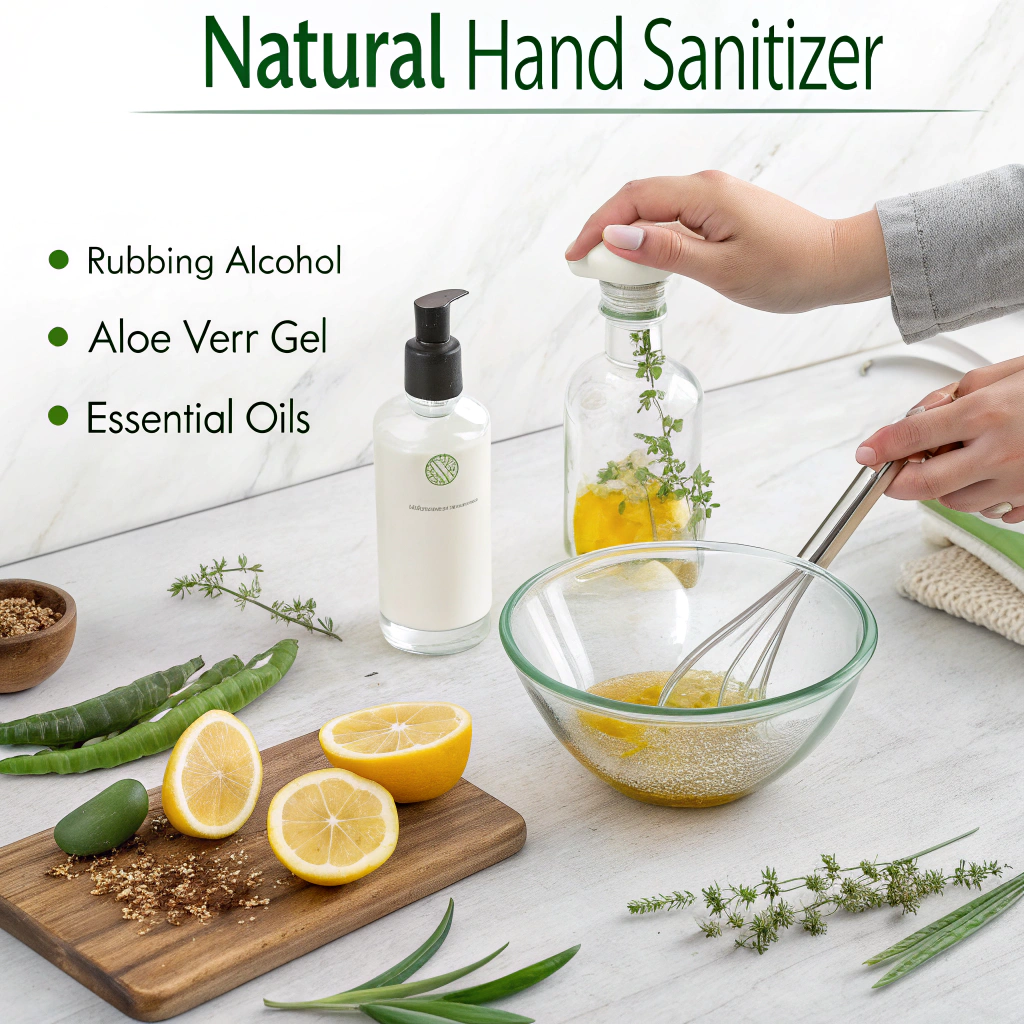In a world where hygiene has become more crucial than ever, hand sanitizers have emerged as essential items in our daily lives. However, many commercial hand sanitizers contain synthetic ingredients and chemicals that may not be suitable for everyone. Making your own natural hand sanitizer is not only a simple and cost-effective solution but also allows you to control the ingredients you use. In this article, we will explore how to create your own natural hand sanitizer, the benefits of doing so, and some tips to ensure its effectiveness.
Why This Topic Is Worth Reading

Understanding how to make your own natural hand sanitizer is valuable for several reasons. First, it empowers you to take control of your health and hygiene by using ingredients that are safe and effective. Second, with the rise in demand for hand sanitizers, many commercial products may be out of stock or overpriced. By making your own, you can ensure you always have a supply on hand. Lastly, this DIY approach is environmentally friendly, reducing the need for plastic packaging and harmful chemicals.
In this article, you will learn about the essential ingredients needed for a natural hand sanitizer, step-by-step instructions for making it, and tips for ensuring its effectiveness. Whether you are a parent looking to keep your family safe or someone who wants to minimize exposure to chemicals, this guide is for you.
Key Highlights or Must-Know Points
- Natural hand sanitizers can be made with simple ingredients like alcohol, aloe vera, and essential oils.
- Homemade sanitizers can be just as effective as commercial products when made correctly.
- Understanding the right alcohol concentration is crucial for effectiveness.
- Customization with essential oils can provide pleasant scents and additional antibacterial properties.
How to Make Your Own Natural Hand Sanitizer
- Gather Your Ingredients: You will need isopropyl alcohol (at least 60% concentration), aloe vera gel, and essential oils (optional). For a basic recipe, use 2/3 cup of isopropyl alcohol and 1/3 cup of aloe vera gel.
- Mix the Ingredients: In a bowl, combine the isopropyl alcohol and aloe vera gel. If you choose to add essential oils, include about 10 drops of your preferred oil, such as tea tree or lavender, for added antibacterial properties and fragrance.
- Transfer to a Container: Pour the mixture into a clean, empty bottle. A squeeze bottle or pump bottle works best for easy dispensing.
- Label Your Sanitizer: Clearly label the bottle with the contents and the date it was made. This will help you keep track of its freshness.
Isopropyl alcohol is the key ingredient that kills germs, while aloe vera gel helps to moisturize your hands and prevent dryness.
Stir the mixture thoroughly until it is well combined. The consistency should be gel-like, making it easy to apply.
Make sure the container is sanitized to avoid contamination. You can use a small funnel to make this process easier.
Homemade sanitizers can last for several months, but it’s always good to check for any changes in smell or consistency before use.
Extra Tips, Notes, or Warnings
- Use the Right Alcohol Concentration: Ensure that the isopropyl alcohol is at least 60% concentration for effective germ-killing.
- Test for Skin Sensitivity: Before using your homemade sanitizer extensively, test it on a small area of skin to check for any allergic reactions.
- Store Properly: Keep your hand sanitizer in a cool, dry place away from direct sunlight to maintain its effectiveness.
Lower concentrations may not be effective against certain viruses and bacteria.
Some essential oils can cause irritation, so it’s important to ensure they are safe for your skin type.
Heat and light can degrade the ingredients over time.
Common Questions Answered
Can I use other types of alcohol? Yes, you can use ethanol (ethyl alcohol) as an alternative, but ensure it is at least 60% concentration.
How often should I use hand sanitizer? Use hand sanitizer when soap and water are not available, especially after touching surfaces in public places.
Is homemade hand sanitizer as effective as store-bought? When made correctly with the right ingredients, homemade hand sanitizer can be just as effective as commercial products.
Can I add other ingredients? Yes, you can customize your sanitizer with other natural ingredients like vitamin E oil for added skin benefits.
Final Thoughts
Making your own natural hand sanitizer is a simple yet effective way to ensure you have a safe and reliable means of keeping your hands clean. By using natural ingredients, you not only protect your health but also contribute to a more sustainable lifestyle. With the knowledge gained from this article, you can confidently create your own hand sanitizer tailored to your preferences.
Get Involved
We encourage you to try making your own natural hand sanitizer and share your experiences! If you have any questions or tips, feel free to leave a comment below. For more wonderful content on health and wellness, check out my site at mindofgriff.com. Your feedback and insights are always welcome!
Leave a Reply